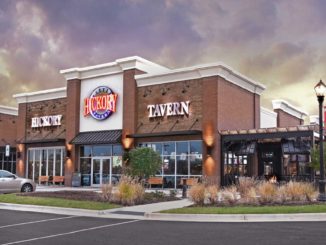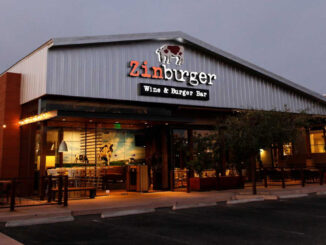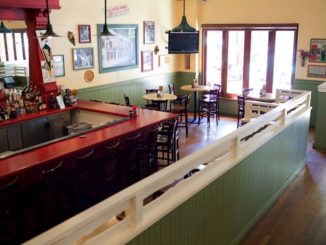
5.4.2020
This month marks the 25th anniversary of the founding of CrunchTime, a leading restaurant technology solution provider whose software optimizes food and labor operations, helping to reduce food and labor costs, improve the guest experience and increase profits. It’s a time that should have been joyous for the company as it celebrates its long track record of successes. Unfortunately, the COVID-19 pandemic has put a big damper on those celebrations. To gain some perspective, we spoke with Jean Fogarty, who has served as Vice President of Client Services at CrunchTime since 2000. Under Jean’s guidance, the Client Services group has evolved to meet the fast-changing needs of the technology-driven hospitality industry. For the foreseeable future, these needs will obviously focus on helping restaurants meet the challenges of eventually reopening their doors and ramping up their operations — in the process, performing as efficiently and effectively as possible to minimize waste and maximize profitability — in an industry upended by the public health crisis.
First off, congratulations on being recognized as a winner of our “Restaurateurs’ Choice Award for Environmental Good” achievement awards competition. As we noted, CrunchTime’s advanced BizIQ reporting helps restaurants lower their total food inventory level by upwards of 25%, resulting in minimal food waste. Can you talk a bit about the environmental benefits of your solution?
Waste is the enemy, and since most of us at CrunchTime have run restaurants, we know how to reduce it. For example, we know that GMs just hate to run out of food because it’s so painful, so they “go with their gut” and over-order a little. And then do it again next week. Over time that’s a disaster.
To guard against that, one client ran a report on inventory levels across all their locations over time, and found they had WAY too much on-hand. So, they began using our Suggested Order feature, which uses algorithms to help GMs right-size their vendor orders. In the end they dropped their overall inventory levels more than 25%, and they can see if inventory starts creeping up again, because we put that trend chart on their dashboard.
By helping customers plan efficient menus and LTOs, track sales trends to react quickly, and analyze inventories to spot problems, our solutions help reduce waste streams, and improve profitability. 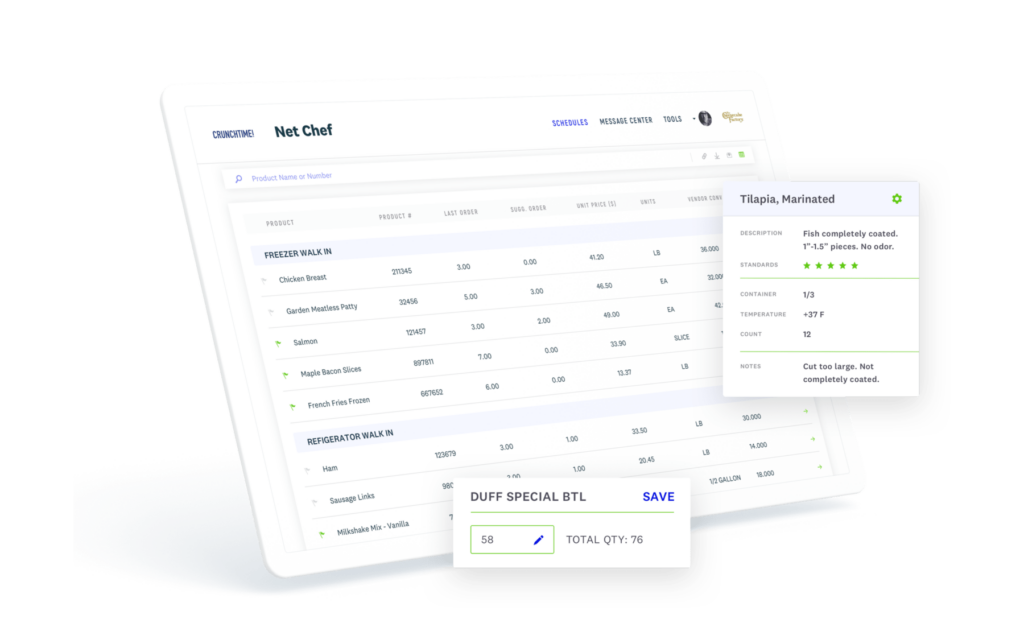
Can you also talk a bit about what is happening at CrunchTime in light of the current health crisis? Obviously, your customers have been severely impacted.
We immediately reached out to every customer to see how we could help, and we continue to check in with them as often as they like. We provided customers a quick step-by-step path forward in case they had to close their restaurants. Soon, we will provide streamlined steps for getting up and running again and for forecasting in this new environment. It’s important that we share with our user community how real customers use the CrunchTime applications to close and re-open their foodservice operations and navigate this uncharted operating environment. As for CrunchTime the company, early on in this pandemic our CEO and CFO put together a detailed plan to keep all our employees working full time.
Our CEO felt strongly that our teams needed to continue to work at full capacity to ensure we have momentum and full strength when the industry starts to recover. Thankfully our teams are used to working remotely as that is part of our company culture. So, once the decision was made to close our offices in downtown Boston, we had all the resources and processes in place to ensure business continuity. I do miss our “Thirsty Thursday” company meetings, but now we do them remotely.
Naturally, there was a slowdown in certain areas of our business, but we saw that as an opportunity to tackle meaningful projects.
CrunchTime has come a long way since you joined the company twenty years ago as Vice President of Client Services. What was the original vision? How did that vision change — or not change— as the company grew?
First, I am from the hospitality industry and I got into it because I loved it- I’m thrilled to still be in it 35 years later! While the industry and technology has evolved, our vision hasn’t really changed. We’re still committed to providing the best technology to help operators lower their food and labor costs, sharpen their operations, and make better decisions.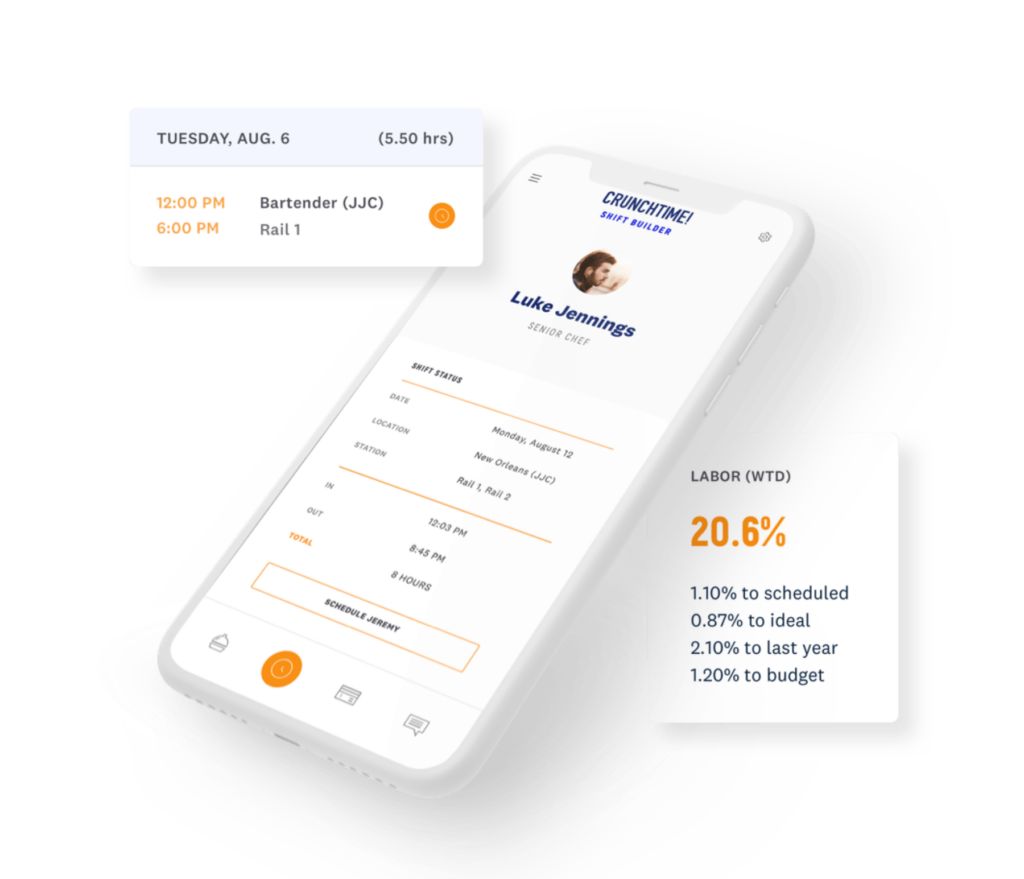
We also still treat our customers the way we’d like to be treated, in every interaction. It’s easy to do when things are going great, but I’ve worked at CrunchTime thru 9/11, the 2008 financial crisis, and now the COVID pandemic, and the way we treat our customers and our employees has remained a constant. We’re committed to it.
As an illustration of that, we’re focused on providing help to our end users, from new GMs using Net-Chef, to veteran Corporate Users, in the ways that work best for them. I have to say, during our move to e-learning a few years ago I thought, “who wants to watch a video to learn how to do inventory?” It turns out lots of people. We have 100+ courses we offer for free, and learners have completed hundreds of thousands of lessons on their PCs and phones. And now we offer in-app guided walk-throughs because our users love them.
What’s involved in setting food inventory and labor management strategies for different leading restaurant brands?
When we set strategies, we keep in mind one constant: all restaurant companies are looking to drive sales and have their managers doing less in the office. After the initial strategies are developed during implementation, they’re refined during customer visits, as part of our regular “Customer 360” business review. We present our analysis of their food and labor practices, based on their actual data. We look at app usage, food and labor reporting, and industry trends, and give them a customized playbook for driving more ROI. And it’s not just advice about using our application; we also share operational best practices from other successful customers. We do this for every customer, so we have a large sample size to drive conversations about what works. This process has been hugely beneficial to our customers, and we will continue to deliver this when we can travel again.
Is it fair to say that inventory and labor management strategies have become increasingly sophisticated over time? If so, why is that the case?
Yes, it’s fair to say that, and the advances have come because technology, and the way users interact with it, has evolved. There’s tremendous real-time data available now to draw on: costs, pricing, sales trends, and on and on. The caveat is that it all needs to be easy to access. Think of your smart phone and how you interact with that; your food and labor technology must be similarly easy to use. Your food and labor platform should provide fast, prescriptive advice to help users make key decisions about their business. And technology is only part of the solution; having smart processes that enable the managers to drive sales and manage by exception are other keys. So, in the end, the strategies have become more sophisticated based on improving technology, but ultimately success boils down to making data accessible, and leadership empowering their teams to execute those strategies.
How does the CrunchTime platform help restaurants increase operational efficiencies in a normal operating environment? What are the main components of your-next generation back office suite and how do they work together?
We’ve been working hard for years helping managers streamline their day to day operations. For example, we have built in a great deal of logic to automate repetitive processes like labor scheduling and ordering. We’ve built in exception reporting too, so users don’t have to worry about every keystroke- instead, if there are exceptions in quantity or value outside a threshold, they get a alert. And we are looking at implementing AI for many other functions, because prescriptive usage is streamlined and removes a good bit of user error.
In addition, soon, our core back office product will be an app. We’ve built apps for specific functions like counting inventory and food safety checklists, and they save our customers so much time- so, we are going all-in and making our core product a native mobile application! Managers will no longer be tied to logging in to a URL; they’ll have CrunchTime in their pockets instead.
Finally, as our product offerings have evolved, we have become the “hub” of many customers’ food and labor operations; using APIs to enable easy interfaces between our platform and ancillary products is the key to our next generation. We started down this road with our labor product, and it has been a great step forward in our partnerships with HRIS, payroll and other systems. We’ll continue to build out our API platform to benefit not just our customers, but all our partners in the industry. We have over 1,000 system integrations with POS, accounting, HR and payroll and vendor suppliers at this point. 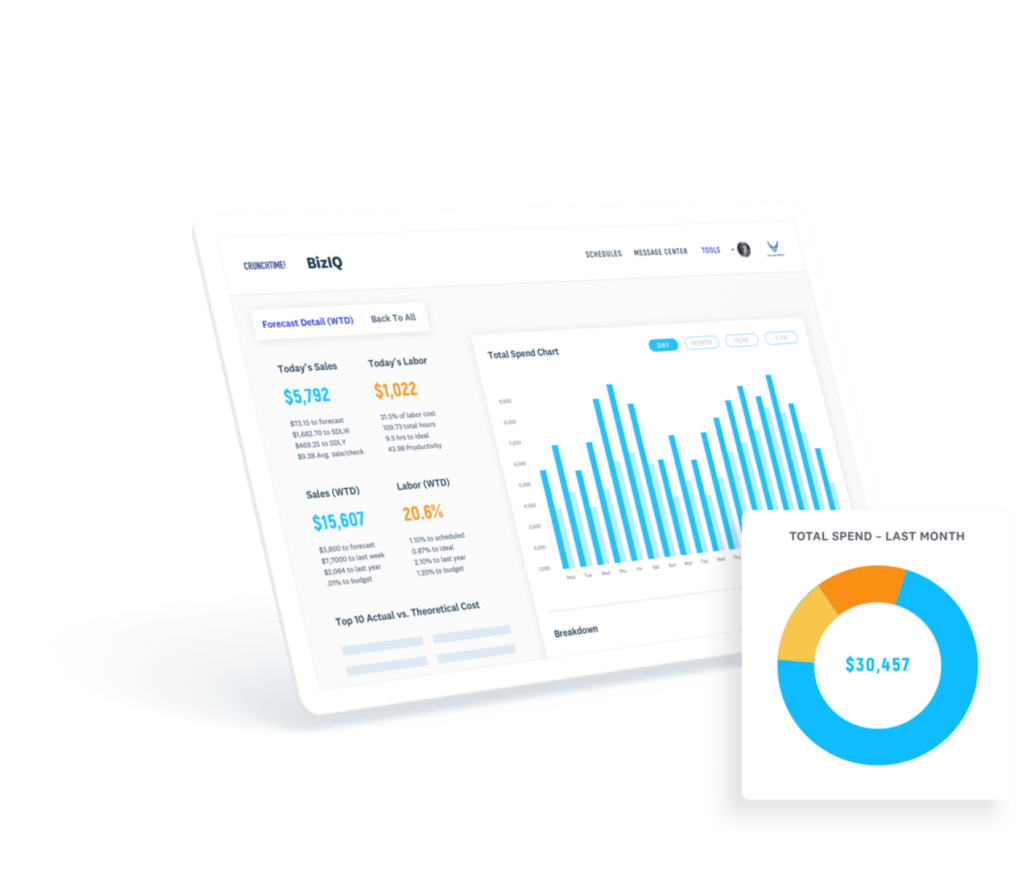
We’ve covered a number of success stories enabled by CrunchTime, including Juiceland, The Briad Group and Kura Sushi. What types of restaurants are most likely to benefit from your solutions?
Tremendous configurability has always been a core capability of the platform, so we can service a wide range of industry segments. We have enormous multinational theme parks, corporate food service companies, and more typical multi-unit operators using our system. That is the beauty of of our configuration scheme. In fact, any business that has perishable inventory can benefit from our system, though we recommend it for organizations with 10 or more units, due to management of items, recipes, etc.
What new CrunchTime capabilities, including software features and functionality, are you most excited about and should restaurant owners and operators also be most excited about once the industry returns to some semblance of normalcy?
CrunchTime just finished building out its automation suite, and it’s remarkable. The system can be set up to automatically complete key tasks like ordering and receiving goods, and optimal labor scheduling. Those things can take a lot of a manager’s time and this new automation addresses a huge customer need: keeping managers out of the office, so they can be in the front of the house making great impressions on guests and growing sales.
What do you like most about your work at CrunchTime? What are the biggest challenges, aside from the current situation?
I love what I do because I can innovate fearlessly; if I have an idea about making our user experience better, we try it. We have had so much growth from this mentality, thanks to many wins… and some grand failures.
In addition, I have had the fantastic opportunity to build out my entire organization, from support to training, and all our service offerings in between. About 5 years ago I decided to look critically at every aspect of our service delivery. My first step was visiting our customers to get their input. Then I brought on experts in our different disciplines and allowed them to shape and reshape what we bring to our customers. It was incredibly gratifying.
What, in your view, are the biggest obstacles restaurant operators are likely to face over the next few years as they look to rebuild their businesses? Can technology help address those challenges?
Everyone is going to be focused on driving sales and cutting costs – as they should be. Operators will have to be incredibly efficient as they rebuild, making the most of every hour of labor and ounce of food- and powerful technology can absolutely help. Whether it’s quickly identifying and promoting the most profitable menu items, completing mundane tasks with automation, or using sophisticated AI to predict optimized labor schedules, technology should drive operators towards making the smartest and most profitable decisions as they return to health.


